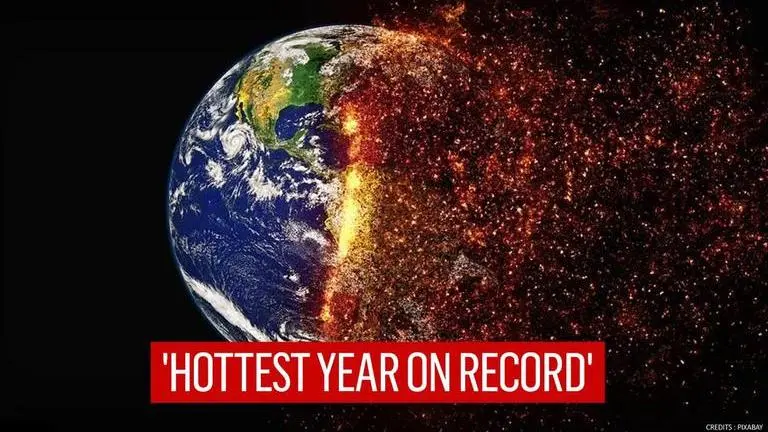Updated 8 January 2021 at 20:12 IST
EU climate monitoring service ECMWF lists 2020 as 'hottest year on record', ties with 2016
"2020 stands out for its exceptional warmth at 1.25 degrees C (2.7 degrees F)," said C3S director Carlo Buontempo, of the Copernicus Climate Change Service.
- World News
- 2 min read

The year of the global pandemic 2020 was recorded as 'the hottest' at a temperature of 1.25 degrees C (2.7 degrees F) that surged far beyond pre-industrial levels, European Union's Copernicus Climate Change Service said in a release. 2020 was tied with 2016 as the warmest year ever registered, along with six other years hottest years documented by the European Union's climate monitoring service. "2020 stands out for its exceptional warmth," said C3S director Carlo Buontempo, of the Copernicus Climate Change Service. "This is yet another reminder of the urgency of ambitious emissions reductions to prevent adverse climate impacts in the future,” he added.
The year 2020 was recorded to have hit heat that surpassed the normal standards mentioned in the 1981-2010 reference period and around 1.25°C above the 1850-1900 pre-industrial period, according to ECMWF. Europe had witnessed the hottest year on record at 1.6°C, which the scientists found at least 0.4°C above 2019 temperature, and the previous warmest year. Meanwhile, the CO2 global column-averaged maximum reached 413 ppm, as in 2020, the CO2 hit past normal value by 2.3 ± 0.4 ppm, which was only slightly less than the growth rate of 2016. Arctic and northern Siberia hit intense global warming with the largest annual temperature deviations of 3°C and in some locations even over 6°C in the year 2020.
Advertisement
🌡️2020 has tied with 2016 as the warmest year on record, as well as being the hottest year recorded for Europe, according to our #CopernicusClimate Change Service.
— Copernicus ECMWF (@CopernicusECMWF) January 8, 2021
Follow this thread for more details, or read the full press release on our website➡️https://t.co/aEj53ieM5u pic.twitter.com/qk87x1iKtg
📢December #SeaIce highlights from #C3S:
— Copernicus ECMWF (@CopernicusECMWF) January 8, 2021
❄️#Arctic: Tied for third lowest December extent, closely following the second lowest year
❄️#Antarctic: Just below average sea ice extent, but with large regional differences
For more detail ➡️https://t.co/kaPnz1paBm pic.twitter.com/pVeqjlxcuM
📢December #temperature highlights from #Copernicus #C3S:
— Copernicus ECMWF (@CopernicusECMWF) January 8, 2021
🌡️ Globally, December 2020 was the sixth warmest on record
🌡️ The six warmest Decembers all occurred in the last six years
More➡️https://t.co/hhJeTN4NXr pic.twitter.com/tN9jaNsbmg
Increase in wildfires
According to the ECMWF researchers, Western Siberia experienced “an exceptionally warm winter and spring, a pattern is also seen over summer and autumn in the Siberian Arctic and over much of the Arctic Ocean.” There was also a record increase in the instances of wildfires and forest fires in both summer and autumn. The Arctic circle poles released a whopping 244 megatonnes of carbon dioxide in 2020, and the Arctic sea ice melted at record levels in July and October despite a cooling La Niña, as per the report. “Northern Hemisphere experienced above-average temperatures for the year, apart from a region over the central North Atlantic,” the annual global temperature average report suggested. It added that only some parts of the Southern Hemisphere experienced below-average temperatures.
Advertisement
Published By : Zaini Majeed
Published On: 8 January 2021 at 20:12 IST
